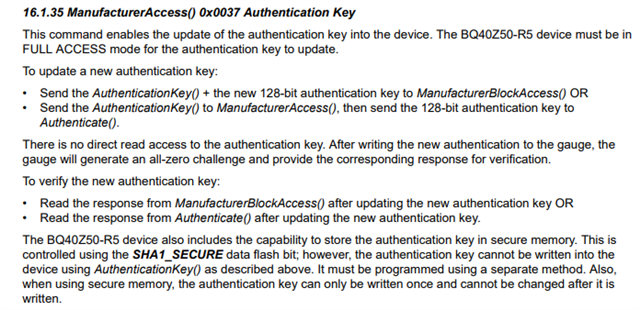Other Parts Discussed in Thread: , BQKEYPACKAGER
Tool/software:
My customer looks for method to prevent using not authorized 3rd party battery on their product.
As a potential solution, he found BQ40Z50 and he is asking some questions.
- Is it possible to transition from SEALED mode to UNSEALED or FULL ACCESS mode?
The datasheet states “Once in SEALED mode, the gauge can never permanently return to UNSEALED or FULL ACCESS modes” in 10.5.1 FULL ACCESS or UNSEALED to SEALED.
While, according to 10.5.2 SEALED to UNSEALED and 10.5.3 UNSEALED to FULL ACCESS, it seems that transition from SEALD mode to UNSEALD mode and FULL ACCESS is possible. - Is following understanding about UNSEALD mode correct?
- Cannot read or rewrite the authentication key
- Migration to FULLACCESS cannot be done unless the full access key is known
- Firmware copying cannot be done because it cannot switch to ROM mode
- The customer considers to operate at UNSEALED mode since accessible information of SEALED mode is limited.
In systems that perform authentication from the host in UNSEALD mode, is there any risk that workable counterfeit products can be made by 3rd party?
Best regards,
Shota Mago




